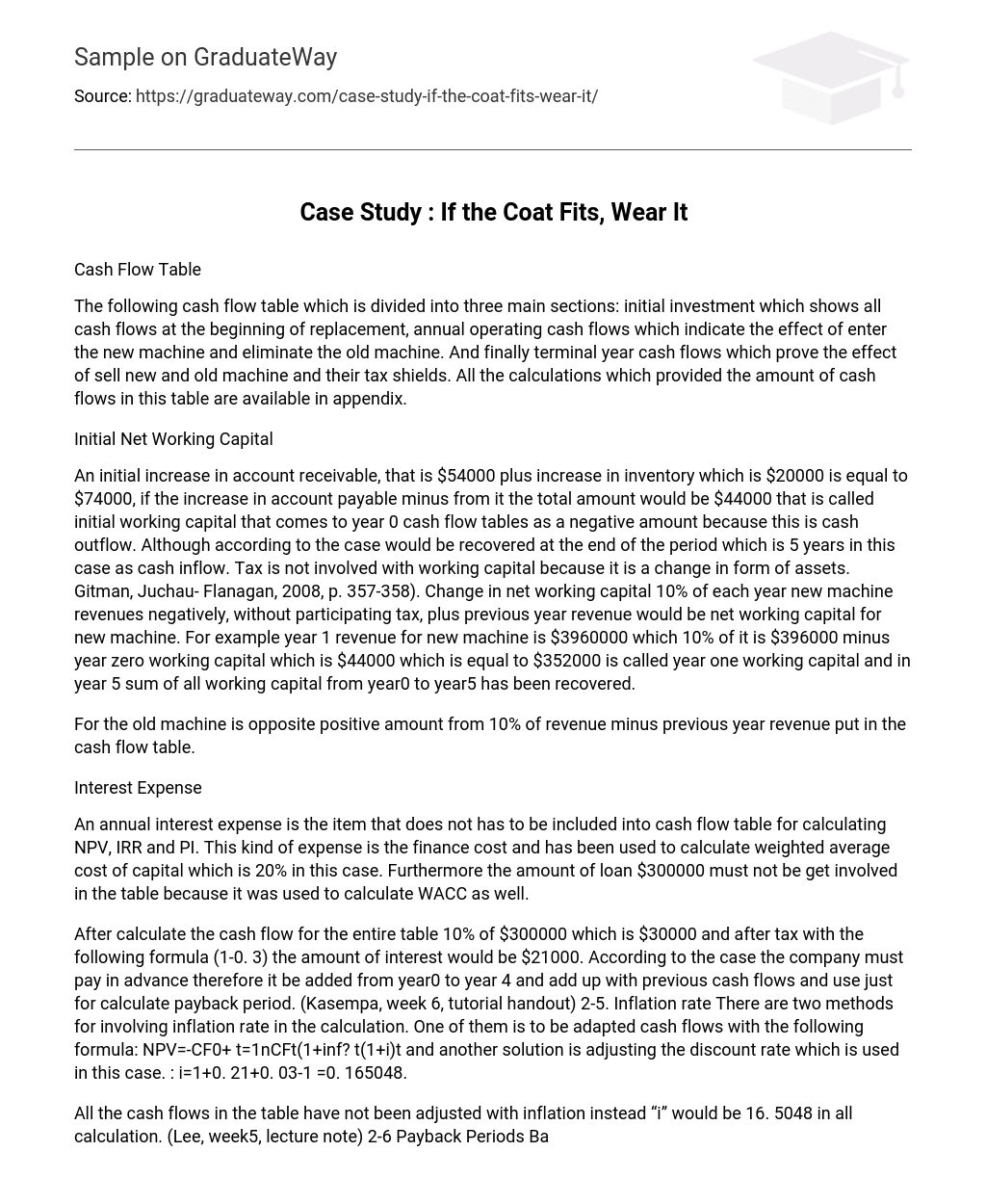Cash Flow Table
The cash flow table is divided into three sections: initial investment, annual operating cash flows, and terminal year cash flows. The initial investment section displays all cash flows at the beginning of replacement. The annual operating cash flows section indicates the effect of entering the new machine and eliminating the old machine. Lastly, the terminal year cash flows section demonstrates the effect of selling both the new and old machine, along with their tax shields. The calculations for the cash flows in this table can be found in the appendix.
Initial Net Working Capital
The initial working capital in year 0 is calculated by adding the increase in accounts receivable ($54,000) to the increase in inventory ($20,000), resulting in a total of $74,000. From this amount, subtracting the increase in accounts payable ($44,000) gives us a negative initial working capital recorded as a cash outflow. However, it is expected to be recovered as a cash inflow at the end of the 5-year period.
Tax does not affect working capital since it represents a change in asset form. When considering a new machine, the net working capital change is determined by calculating 10% of its annual revenue for each year. This value is then subtracted from the previous year’s revenue without considering tax implications to determine the net working capital for that specific year.
For example, if year 1’s revenue for the new machine is $3,960,000, then 10% of this amount would be $396,000. Subtracting the year 0 working capital ($44,000) from this results in a year one working capital of $352,000.
All working capital amounts from year 0 to year 5 are expected to be recovered over this five-year period (Source: Gitman Juchau- Flanagan (2008), p.357-358).
For the old machine, the amount is negative, which is 10% of the revenue minus the revenue from the previous year and this is entered into the cash flow table.
Interest Expense
The cash flow table used for calculating NPV, IRR, and PI does not incorporate the yearly interest expense. This expense is regarded as a finance cost and is utilized in determining the weighted average cost of capital (WACC), which stands at 20% in this scenario. Furthermore, the loan amount of $300,000 is also omitted from the table as it was employed in calculating the WACC.
After determining that the cash flow for the whole table is 10% of $300,000, resulting in $30,000, and applying a tax rate of (1-0.3), the interest amount becomes $21,000. As stated in the case, the company must pay this amount in advance and it should be combined with previous cash flows from year 0 to year 4 for calculating the payback period. This calculation will only be used for determining the payback period (Kasempa, week 6, tutorial handout) 2-5. The inflation rate can be incorporated into the calculation using two methods. One method involves adjusting the cash flows using this formula: NPV=-CF0+ t=1nCFt(1+inf? t(1+i)t. Alternatively, you can adjust the discount rate used in this case by following these steps: i=1+0.21+0.03-1=0.165048.
All the cash flows in the table have not been adjusted with inflation; instead, “i” would be 16.5048 in all calculations (Lee, week5, lecture note). Based on payback period analysis in the table below, the company should not replace the machine. According to the company’s payback period, it is 3 years. However, the payback period for this replacement is 4.16 years.





